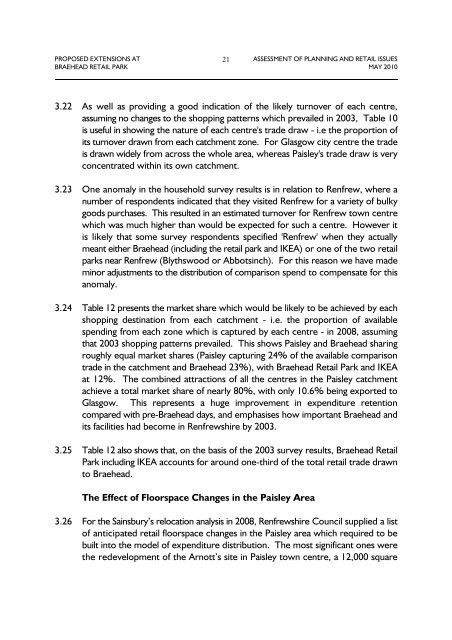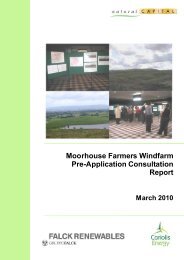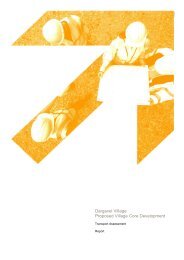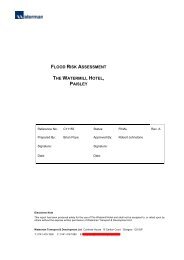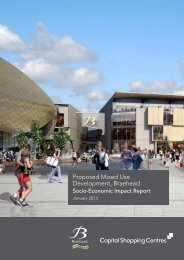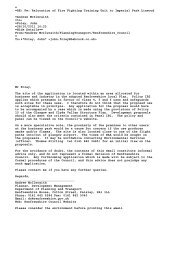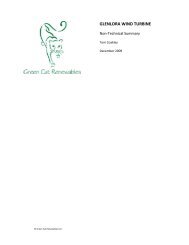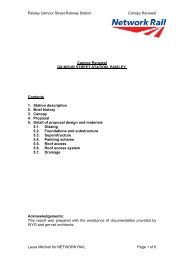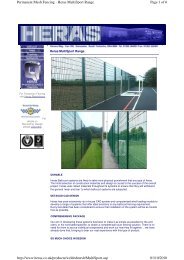Assessment of Planning and Retail Issues - Renfrewshire Council
Assessment of Planning and Retail Issues - Renfrewshire Council
Assessment of Planning and Retail Issues - Renfrewshire Council
You also want an ePaper? Increase the reach of your titles
YUMPU automatically turns print PDFs into web optimized ePapers that Google loves.
PROPOSED EXTENSIONS AT 21 ASSESSMENT OF PLANNING AND RETAIL ISSUES<br />
BRAEHEAD RETAIL PARK MAY 2010<br />
3.22 As well as providing a good indication <strong>of</strong> the likely turnover <strong>of</strong> each centre,<br />
assuming no changes to the shopping patterns which prevailed in 2003, Table 10<br />
is useful in showing the nature <strong>of</strong> each centre's trade draw - i.e the proportion <strong>of</strong><br />
its turnover drawn from each catchment zone. For Glasgow city centre the trade<br />
is drawn widely from across the whole area, whereas Paisley's trade draw is very<br />
concentrated within its own catchment.<br />
3.23 One anomaly in the household survey results is in relation to Renfrew, where a<br />
number <strong>of</strong> respondents indicated that they visited Renfrew for a variety <strong>of</strong> bulky<br />
goods purchases. This resulted in an estimated turnover for Renfrew town centre<br />
which was much higher than would be expected for such a centre. However it<br />
is likely that some survey respondents specified 'Renfrew' when they actually<br />
meant either Braehead (including the retail park <strong>and</strong> IKEA) or one <strong>of</strong> the two retail<br />
parks near Renfrew (Blythswood or Abbotsinch). For this reason we have made<br />
minor adjustments to the distribution <strong>of</strong> comparison spend to compensate for this<br />
anomaly.<br />
3.24 Table 12 presents the market share which would be likely to be achieved by each<br />
shopping destination from each catchment - i.e. the proportion <strong>of</strong> available<br />
spending from each zone which is captured by each centre - in 2008, assuming<br />
that 2003 shopping patterns prevailed. This shows Paisley <strong>and</strong> Braehead sharing<br />
roughly equal market shares (Paisley capturing 24% <strong>of</strong> the available comparison<br />
trade in the catchment <strong>and</strong> Braehead 23%), with Braehead <strong>Retail</strong> Park <strong>and</strong> IKEA<br />
at 12%. The combined attractions <strong>of</strong> all the centres in the Paisley catchment<br />
achieve a total market share <strong>of</strong> nearly 80%, with only 10.6% being exported to<br />
Glasgow. This represents a huge improvement in expenditure retention<br />
compared with pre-Braehead days, <strong>and</strong> emphasises how important Braehead <strong>and</strong><br />
its facilities had become in <strong>Renfrewshire</strong> by 2003.<br />
3.25 Table 12 also shows that, on the basis <strong>of</strong> the 2003 survey results, Braehead <strong>Retail</strong><br />
Park including IKEA accounts for around one-third <strong>of</strong> the total retail trade drawn<br />
to Braehead.<br />
The Effect <strong>of</strong> Floorspace Changes in the Paisley Area<br />
3.26 For the Sainsbury’s relocation analysis in 2008, <strong>Renfrewshire</strong> <strong>Council</strong> supplied a list<br />
<strong>of</strong> anticipated retail floorspace changes in the Paisley area which required to be<br />
built into the model <strong>of</strong> expenditure distribution. The most significant ones were<br />
the redevelopment <strong>of</strong> the Arnott’s site in Paisley town centre, a 12,000 square


